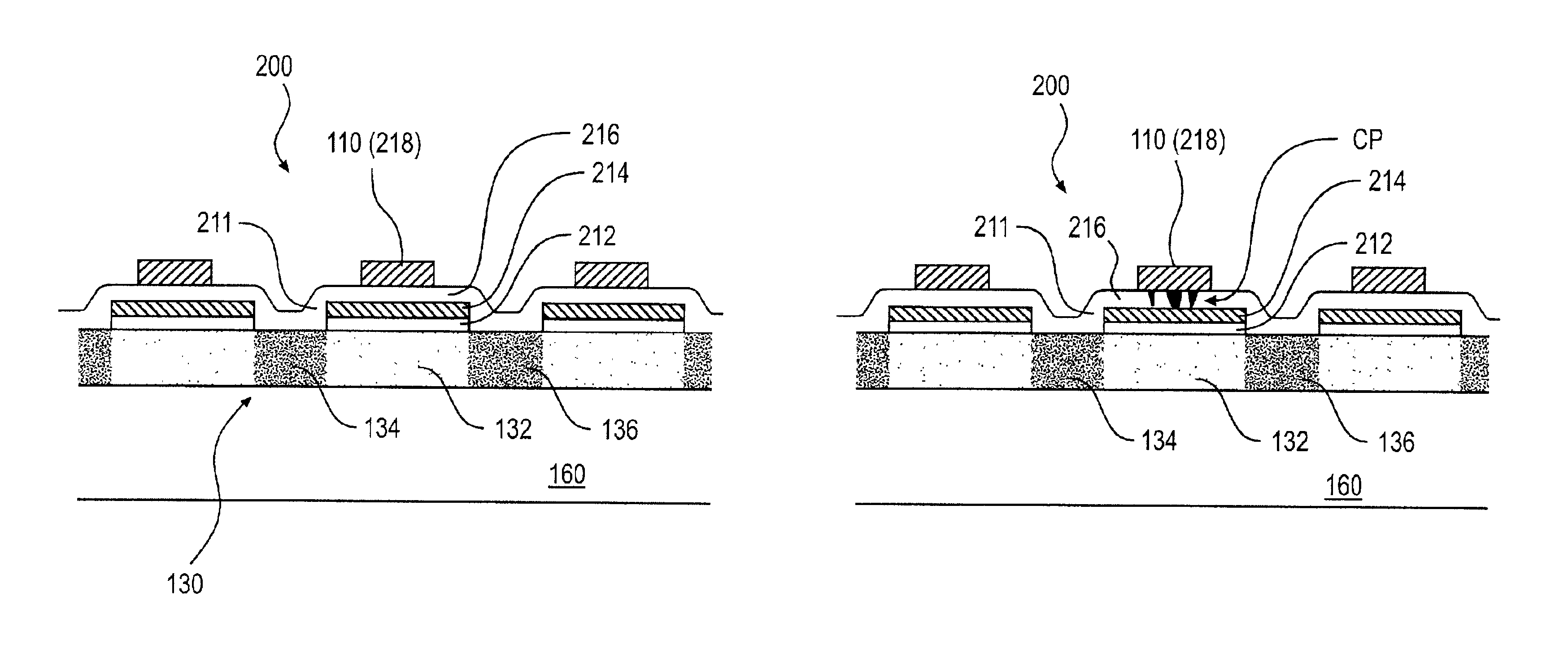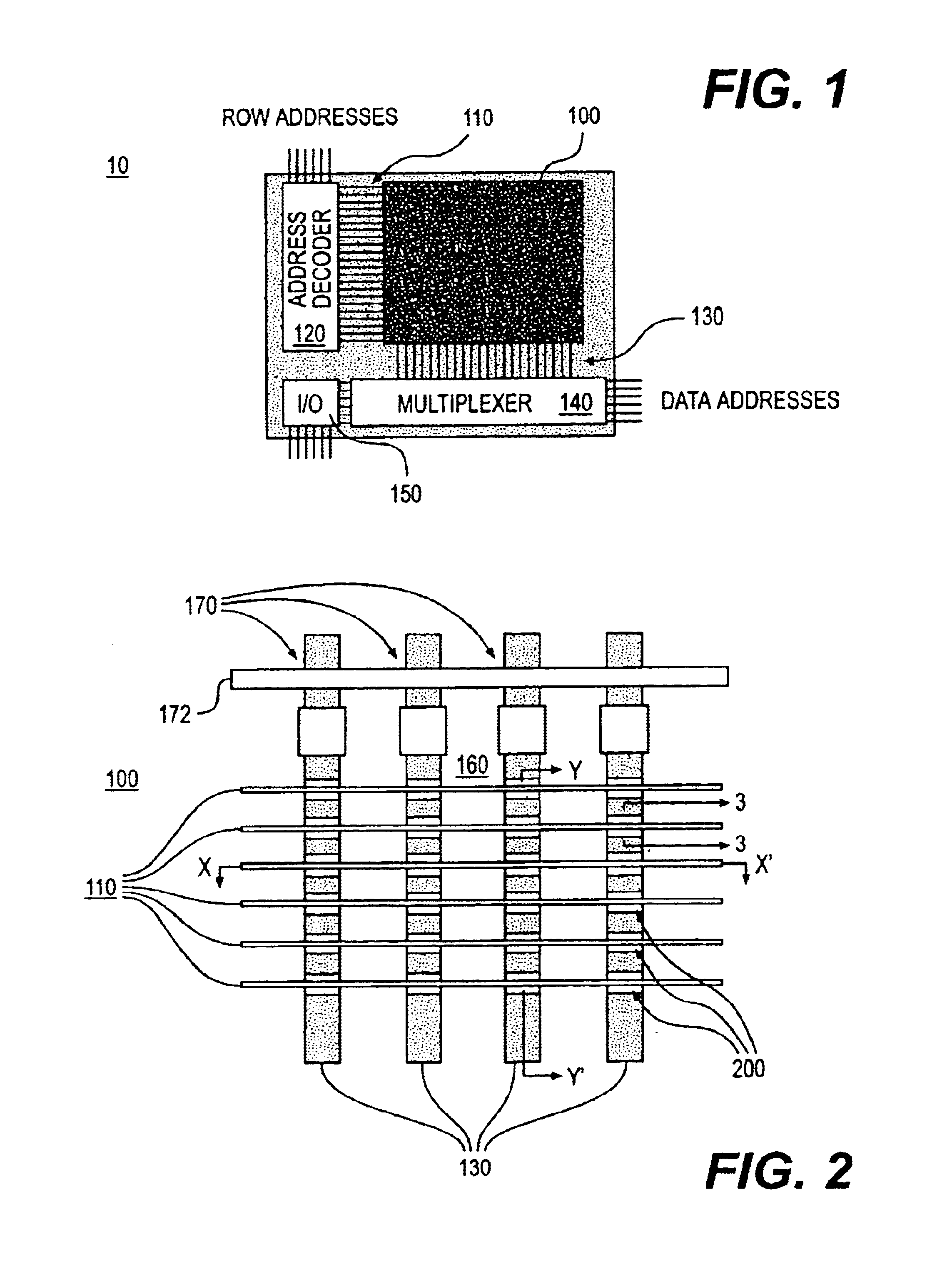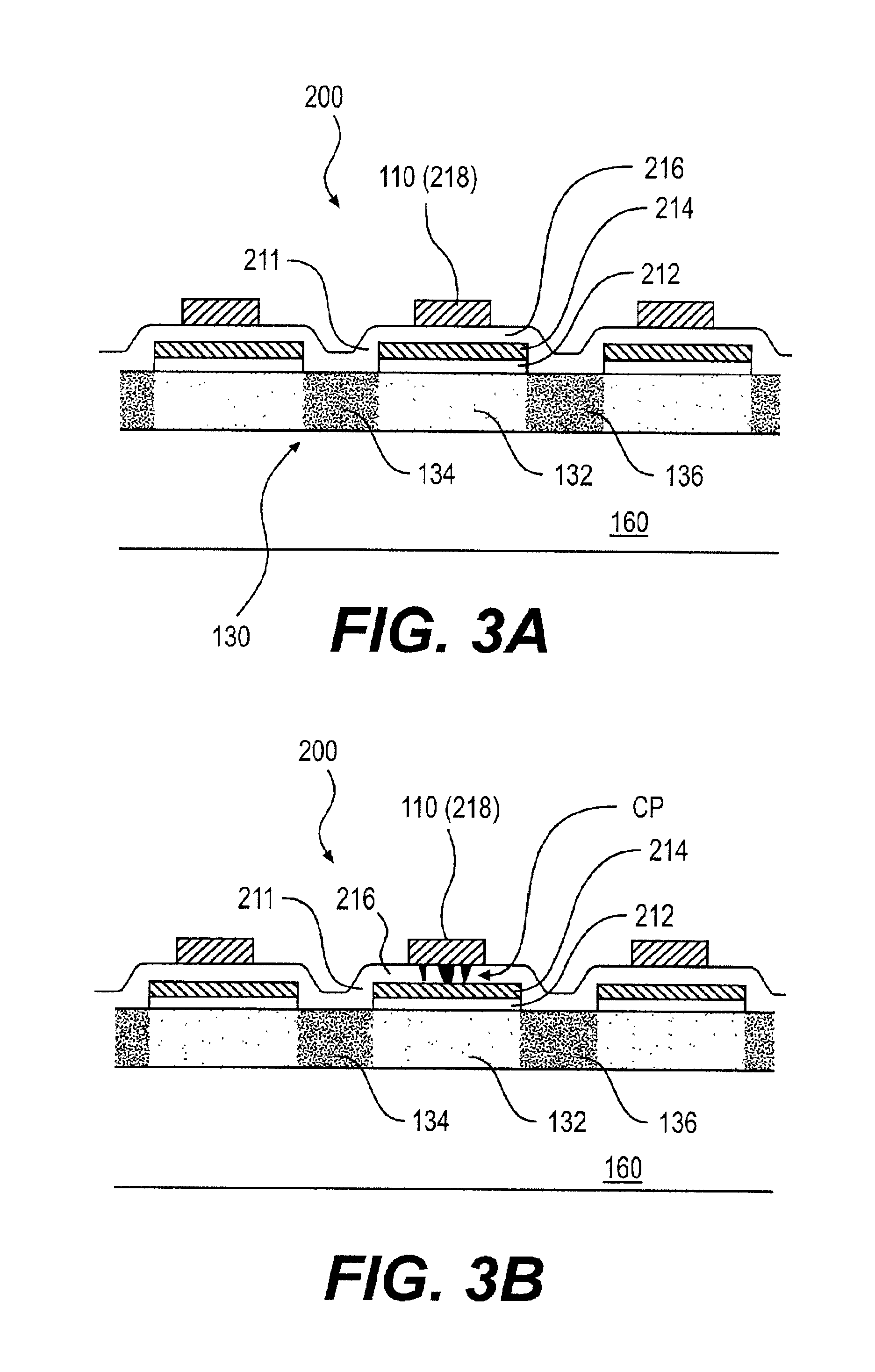Thin film transistor memory device
- Summary
- Abstract
- Description
- Claims
- Application Information
AI Technical Summary
Benefits of technology
Problems solved by technology
Method used
Image
Examples
Embodiment Construction
A memory device will be discussed by way of preferred embodiments and by way of the drawings.
FIG. 1 illustrates a memory device 10. The memory device 10 can be, for example, a memory card, and may be based on thin film technology. The memory device 10 includes a memory array 100 of memory cells. The memory array 100 is coupled to a row address decoder 120 and to a multiplexer 140. The multiplexer 140 is coupled to an input / output (I / O) device 150. The memory cells (not shown in FIG. 1) in the memory array 100 can be three terminal devices, such as, for example, thin film transistor (TFT) devices, and other transistor devices.
The memory array 100 stores data in the memory device 10. The address decoder 120 is coupled to gate lines 110 of the memory device 10. The address decoder 120 accesses the row of a selected memory cell 200 according to an address instruction. The multiplexer 140 is coupled to data lines 130 of the memory array 100. The multiplexer 140 combines signals from the ...
PUM
 Login to View More
Login to View More Abstract
Description
Claims
Application Information
 Login to View More
Login to View More - R&D
- Intellectual Property
- Life Sciences
- Materials
- Tech Scout
- Unparalleled Data Quality
- Higher Quality Content
- 60% Fewer Hallucinations
Browse by: Latest US Patents, China's latest patents, Technical Efficacy Thesaurus, Application Domain, Technology Topic, Popular Technical Reports.
© 2025 PatSnap. All rights reserved.Legal|Privacy policy|Modern Slavery Act Transparency Statement|Sitemap|About US| Contact US: help@patsnap.com



